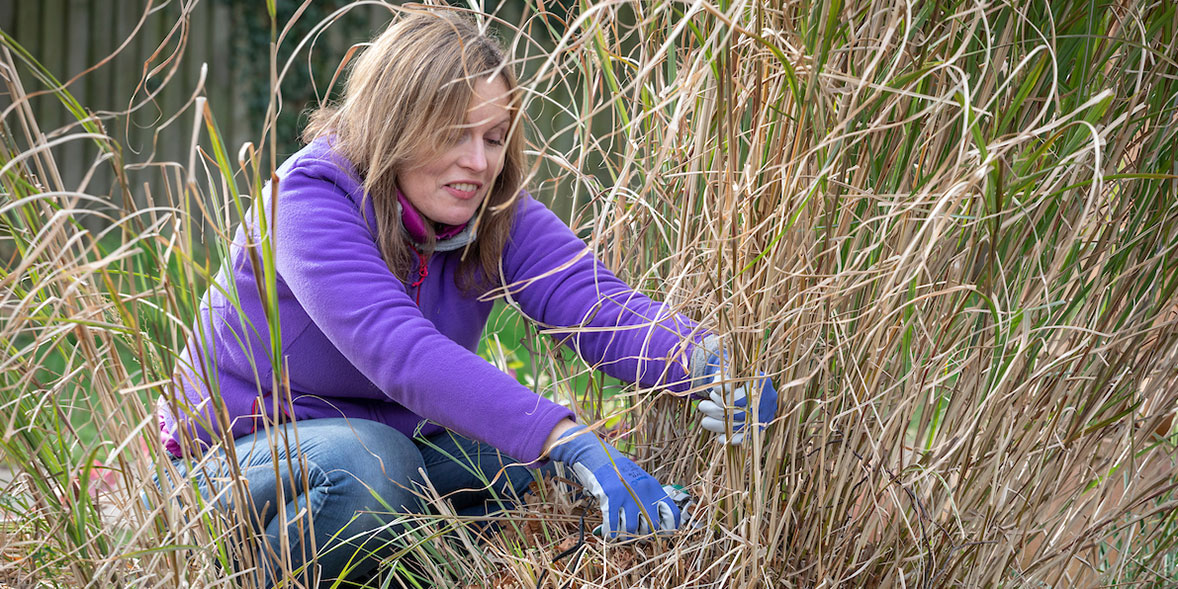
How to get rid of moss in a lawn

In this article
- Why does moss grow in lawns?
- Could I mistake moss for anything else?
- Is it absolutely necessary to control moss?
- Does mowing affect moss?
- How can moss in lawns be discouraged?
- What about problem areas?
- Are there any chemicals for controlling moss in lawns?
- When is the best time to control moss in lawns?
There are many species of moss, and a few are common lawn weeds. They are simple plants with thin cell walls that need a moist atmosphere to survive and reproduce. Wet, shady places are ideal for them. They are often found growing under grasses in lawns. Although they don’t flower and seed, they do produce masses of dust-like spores. These germinate into tiny filaments which eventually turn into the familiar feathery growth. Spores are usually produced in the autumn, and again in the spring.
Mosses that produce spores in the autumn survive into the spring to spore again, along with the plants from the autumn spores. When the weather turns hot and dry, the plants die out, but the spores survive and will grow when autumn rains return.

Why does moss grow in lawns?
Moss grows in lawns when the conditions favour its growth, and if the growing conditions for lawn grasses are not at their optimum. When the grass is in full growth, moss is unable to compete. Mosses are favoured by low soil fertility, low pH (acid soils), compaction of the soil surface, poor drainage, lack of aeration, shade and sparse grass growth.
Could I mistake moss for anything else?
Pearlwort (Sagina procumbens) is a compact weed that looks very like a moss at first glance. But, it has tiny white flowers between May and September, and is darker green and not as feathery. To remove pearlwort from your lawn, treat with a lawn weedkiller.
Is it absolutely necessary to control moss?
Although moss looks nice and green in winter, it dies back in summer, leaving unattractive brown patches. Moss on its own will not tolerate wear - feet and mowers will leave marks, and it can wear away, leaving bald patches. Dead moss accumulates as 'thatch' at the base of the grass, preventing air and water from reaching the grass roots.
Make more of your garden - get our free Gardening newsletter for top tips from our experts
Does mowing affect moss?
Close mowing can seriously weaken lawn grasses; they become sparse and cannot compete with weeds and moss. Aim to keep the grass 20mm in height. Mow regularly – during the growing season, utility lawns should be cut three times a fortnight. Longer, coarser grass can encourage moss, too. Aim to cut this to less than 25mm.
Get a better cut with our Best Buy lawn mowers
How can moss in lawns be discouraged?
The best way to discourage moss is to encourage the grass. Lawn grasses generally grow best on fertile, well-drained which gets plenty of sun. Most lawn grasses prefer neutral or slightly alkaline soil. Lawns growing on poor, sandy soils need feeding at least once a year and preferably twice. Different formulations of fertiliser are needed for spring and autumn applications, which should be applied when the soil is moist and the weather warm.
The pH of soils that are very acidic can be raised by the application of lime (ground chalk or limestone) during the winter at a rate of 60g per square metre. However, to be on the safe side, it is best to test the soil pH, either using a cheap test kit from the garden centre. One drawback of adding lime is that fine lawn grasses do best where the soil is acidic. Around pH 5.5 is ideal, so take care if you require a bowling-green finish.
Discover our Best Buy lawn feeds
What about problem areas?
Drainage and soil aeration, particularly of compacted areas, can be improved by spiking with a garden fork to a depth of at least 7.5cm, or by hollow tining. Hollow tining removes a core of soil, which should be allowed to dry on the surface before being raked up. This is then followed by top dressing with a mixture of loam, sand and sieved organic matter brushed into the holes. The top dressing should vary depending on the type of soil. Heavy soils should be dressed with a sandy mixture, while sandy soils should be dressed with a mixture largely of organic matter. You can buy manual hollow tiners, which are hard work, or hire a hollow tine machine.

Lawn grasses grow most vigorously in open areas and growth becomes weaker as shade increases. Densely shaded areas are never likely to support good lawn growth. If shade can’t be reduced, try thinning or removing overhanging trees. Alternatively, consider replacing the lawn with groundcover plants, shingle, bark-chip mulch or paving.
Cut back shrubs and trees with our Best Buy secateurs
Are there any chemicals for controlling moss in lawns?
Ferrous sulphate is an option for treating large areas. It is found in lawn sand, which also contains fertilisers that encourage the lawn to green up.
When is the best time to control moss in lawns?
Chemical controls are best applied in spring, when active moss growth resumes, or in autumn, before the onset of severe frosts.
Discover our Best Buy moss killers

What should I do with the dead moss?
After applying a mosskiller, any moss in the lawn will turn black and die. However, it will be necessary to rake out the dead moss as its presence will continue to hinder the growth of the lawn. The raked-out moss makes an excellent contribution to the compost heap. Feed the lawn with a seasonally suitable fertiliser and lightly top dress if necessary. Sowing seed in sparse areas can be carried out in spring or early autumn.
Try our Best Buy compost bins
